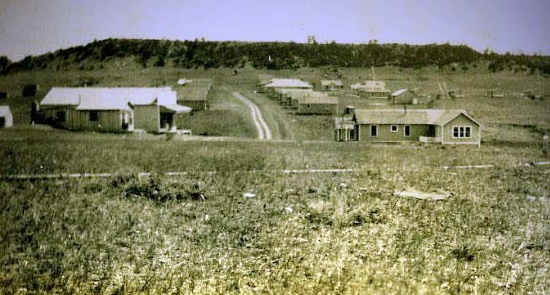
Lance Creek, undated.
In 1917, oil was discovered
at Lance Creek 20 miles north of Lusk. Exploration was first undertaken some five years before by
Dr. J. E. Hawthorne of Lusk. He raised money by advertising. In 1913, Dr. Hawthorne had raised sufficient
funds to drill to a depth of 2,250 feet. He then interested California
oil magnate Henry Allen Rispin in continuing the venture. Rispin was also unsuccessful.
At the same time, Campbell Holt McWhinnie of Douglas drilled without sucess to
a depth of 1,200 feet before abandoning the hole. In 1914, Edwin Hall formed the Pine Dome
Oil Co. After drilling to a depth of 1,700 feet, he too left the field. In 1916, Rispin returned to the
area. After two years, his work produced a water well. In 1917, the Ohio Oil Co. commenced drilling and
on March 13, 1918, struck oil sand at 2,689 feet. The well yielded 80 barrels during the first day. After
reaching the main oil sands, the well was flowing at a rate of 1,500 barrels a day.
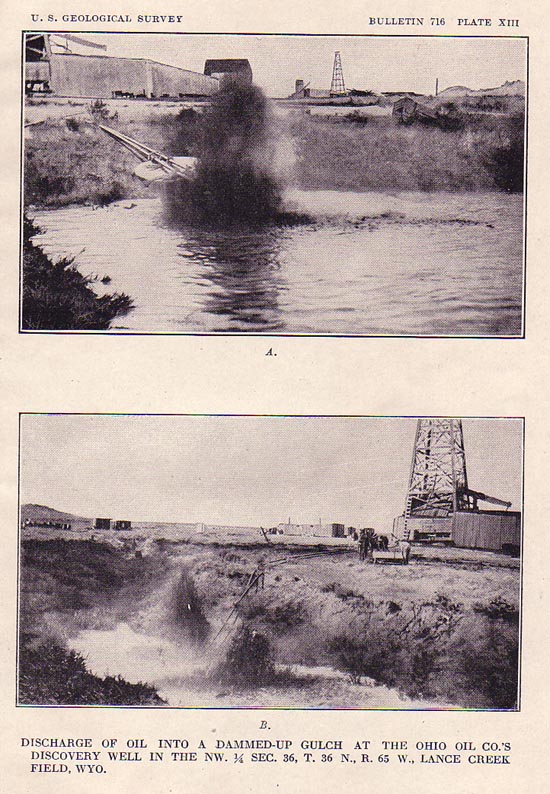
Photos from U.S.G.S Bulletin 716-E, E. T. Hancock,
The Lance Creek Oil and Gas Field
Niobrara County, Wyoming, 1920.
In 1918, uranium was discovered in copper and
siver tailings in the Silver Cliff Mine. Uranium was milled on site and the
mine provided some of the ore for Madam Curie. The mining and petroleum history of
the county is recalled in the names of some of the avenues on the west side of
town: Copper, Radium, Iron, Diamond, Oil, Onyx, and Obsidian.
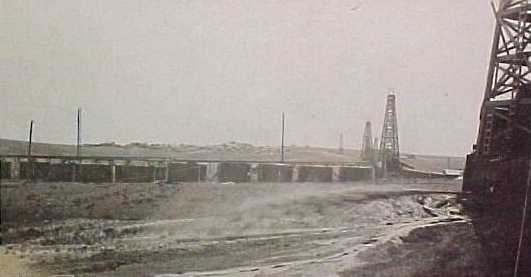
Oil Field near Lusk, 1919
Niobrara County is now the smallest county in the state with a population
of approximately 2,500. In the 1940's, at the height of the oil boom had a population
of 10,000. Petrol refined from Lance Creek petroleum helped the RAF defeat the
Luftwaffe in the Battle of Britain. Not only did the Spitfires have a superior airframe, but the
Rolls Royce Merlin III engines were able to utilize 101 octane petrol refined from Lance Creek oil. The
German engines were restricted to use of 87 octane aviation gasoline.
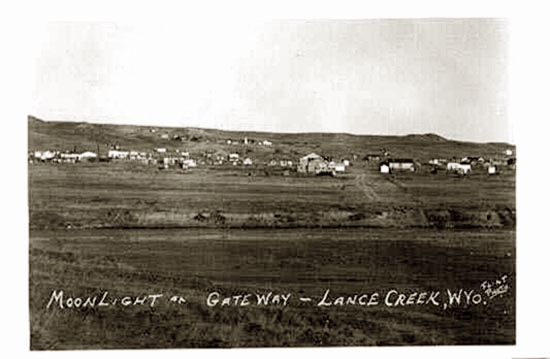
Lance Creek, approx. 1920.
At one time, Lance Creek had some 2,000 residents, but
by 1985, the population had declined to about 50. Lance Creek is now most noted for
upper Crataceous dinosaurs discoveries at several sites between Lance Creek and
Crazy Woman Creek, including the discovery in 1908 of the Edmontosaurus "Mummy" by Charles Sternberg and his sons. Allegedly,
the Sternberg were working on behalf of the British Museum, but in a scene remininscent of the
Bone Wars, the mummy was sold by Sternberg
to the American Museum of Naural History for $2,000.00. The mummy is significant in that
the specimen preserves an impression of almost an entire dinosaur hide.
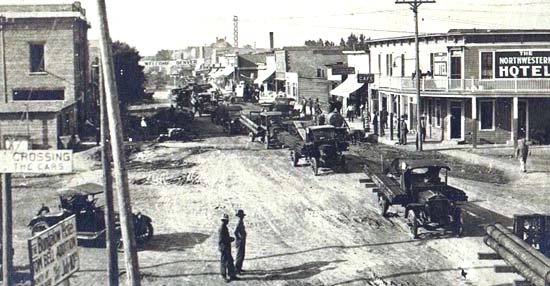
Oil Drilling Rigging being carried through
town, approx. 1917
The banner across the street in the background says, "Welcome Denver."
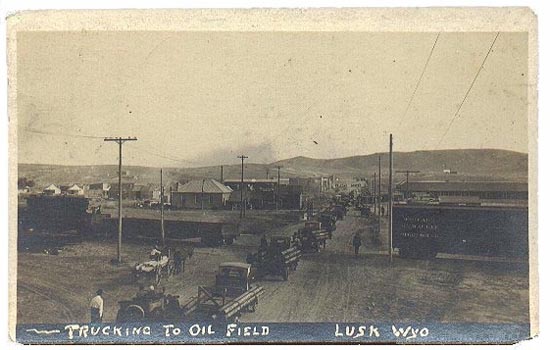
Trucks bearing Oil Drilling Rigging passing through Lusk, approx.
1917.
Both of the above photos appear to be at crossing of Main Street with the railroad tracks just south of the
depot. The crossing as of
2013 has been replaced with a railroad overpass and the railroad tracks moved a little bit further to the north.
Nevertheless, a reminder of the oil boom remains in Lusk. Lusk is the home of the
country's smallest operable oil refinery.
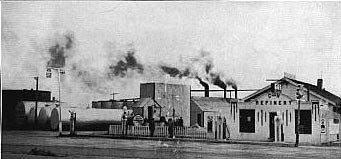 C & H Refinery, 402 W. 8th Street, Lusk, approx. 1950
C & H Refinery, 402 W. 8th Street, Lusk, approx. 1950
As previously indicated,
Lusk started as a center for cattle ranching. With the discovery of
oil at Lance Creek, the area became a center for oil production. Depicted above is a reminder of
that era, the C & H Refinery, the country's smallest operable petroleum refinery, having a capacity of
190 barrels a day. In contrast, modern refineries have a capacity of over
250,000 barrels a day.
In 1933 with the depression, the Ohio Oil Company, began to cut back its Lance Creek operations.
Roy E. Chamberlain and Jim Hoblit in need of work decided to open their own
refinery for the purpose of providing home heating fuel to residents of the area.
The refinery uses late 19th Century stills manufactured by the Erie City Iron Works and brought
to Lusk in 1933. Pumps are steam driven. In 1936, Chamberlain sold his interest to
Hobit. In 1974, the refinery was sold to Joe Chamberlain (not related to Roy Chamberlain).
In 1978, the refinery was closed. In 1998, it was sold to Pakistani businessman and former
fighter pilot Zahin Khalid who restored the refinery to operating condition.
In the Society for Industrial Archeology Newsletter, Vol. 28, No. 4, Winter 1999, Mr. Khalid describes the
refinery when he first saw it:
To my Pakistani sensibilities, it was overwhelming to see the vast and open and empty land as we
drove toward Lusk. We finally reached the town with a population of barely 1,500 people. As we came to a stop
in front of a bunch of trees and a rudimentary structure of some sort, covered with grass and shrubs, the
owner pointed toward this location and identified it as the refinery that I had been so eager to see.
Shocked by the state of the outfit in front of me, I felt the life draining out of my legs.
I inspected the location. I could see only oil tanks outside a small building of 28 ft. X 50 ft. of sheet
iron. There were holes in the walls and roof. A 2 ft-wide door allowed us entry to the building. It
was a discourage sight, vines creeping all over the floors and walls, which were giving way with mud oozing out
of them."
Lusk continued on next page.
|